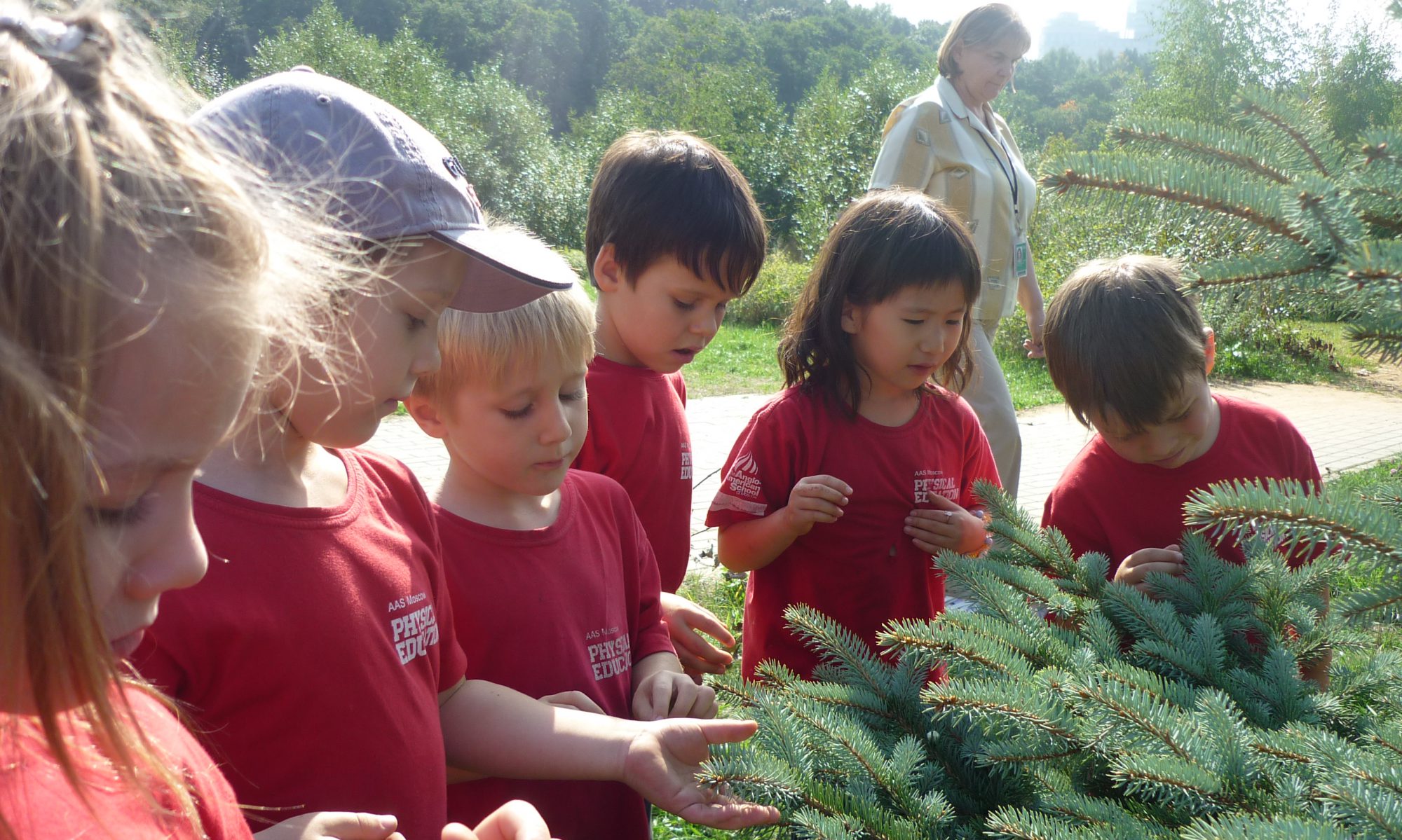Emerson, Trace, and Hannes wanted to measure different things including their shadows during math time. Other students wanted to join in. One sunny morning, KZE students went out to the playground and tried to measure their shadows. They worked with a partner to decide what to use and how to record the information. All groups completed their mission.
Not quite yet. In the early afternoon, Mrs. Zurfluh said to the children: “We are going to measure our shadows again. What do you think will happen? Will our shadows be the same, longer, or shorter than shadows in the morning? Why?” Most children predicted that the shadows in the afternoon will be longer than the mornings because we ate our snack and lunch and we grew. Some students thought they will be the same because we won’t grow that fast.
So they went out to measure their shadows again, standing at the same spot we measured in the morning. After gathering all the record, they noticed that the shadows in the afternoon were shorter than the morning’s. Students were quite surprised by the finding. They were not sure WHY?
The next day, Mrs. Zurfluh gave students a flashlight and a block and said: “I would like you to explore and experiment with these objects and see if you can make some connections of why the shadows in the afternoon are shorter than shadows in the morning.” Students worked in groups to explore. Then they shared their thinking with the whole class. Some meaningful debates occurred:
Group 1 – Kyle, Daisy, Freddie and Hannes
Kyle: “We think that since it was morning the sun was closer to Moscow and it was brighter. So the shadows are bigger. In the afternoon the sun has moved away from Moscow, so the shadows get shorter.”
Scarlett: “How does the sun move closer and further?”
Kyle: “Because it is moving around the earth.”
Emerson: “But how is this possible if the sun stays on the same straight line?”
Mrs. Zurfluh: “Does the sun move or does the Earth move?”
Emerson: “Ah! So then it’s the earth that moves!”
Daisy: “When it is bright, it is morning. The shadow is big. When it is afternoon, the shadow is smaller, and the sun is not bright.”
Lisa: “Why does the shadows go smaller in the afternoon and bigger in the morning?”
Daisy: “In the morning it’s brighter and the earth is closer to the sun. In the afternoon it is further from the sun.”
Kyle: “The earth rotates away from the sun and the shadow is smaller.”
Group 2 – Liam, Lisa, Michael and Safiya
Lisa: “ We noticed that the shadow falls across the table but we are not sure why.”
Michael: “We noticed that if we move the flashlight over the block, the shadow gets smaller.”
Liam, “When our shadows are bigger the sun was shining on our backs. But as the sun went higher, our shadows got smaller.”
Lisa: “When you go closer, the shadow is bigger. The further away, the smaller the shadow.”
Lizzy: “But how do you know this? I don’t understand.”
Emerson: “We don’t really know this, we are experimenting.”
Kyle: “It is a possibility. It may happen.”
Group 3 – Trace, Scarlett, Emerson and Lizzy
Emerson, “We noticed the same as Group 2 but we also noticed something else. When the sun is high we get short shadows, when the sun is low the shadows are longer.”
Lizzy, “We noticed that from the side, its bigger. And from the top, it is shorter.”
As our debates came to the end, students all wondered how and where they can find the answer to the question “Why shadows in the morning are longer than shadows in the afternoon?” They agreed to continue the search for the answers. Their inquiry continues…

Dear KZE,
I have enjoyed reading about your shadow inquiries. I was particularly interested in your noticings. I wonder what you will find out next?
One time, I saw a shadow at night time, when there was no sun.
I will send Miss Emily a photograph. (I tried to add the photograph here but I could not figure out how to do it.)
Tasha
Dear Ms. Tasha,
We think we can see shadows in the morning, in the afternoon, and at night. We can see shadows inside and outside. Because when there is light, there will be shadows. But Mrs. Zurfluh found a flash light. She put her hand over the flash light, we saw the shadow. Then Mrs. Zurfluh got a see through thing, put the flash light over it, and there was no shadow. So it made us wonder if we will see shadows all the time when there is light. We will continue to do more research.
Love, KZE